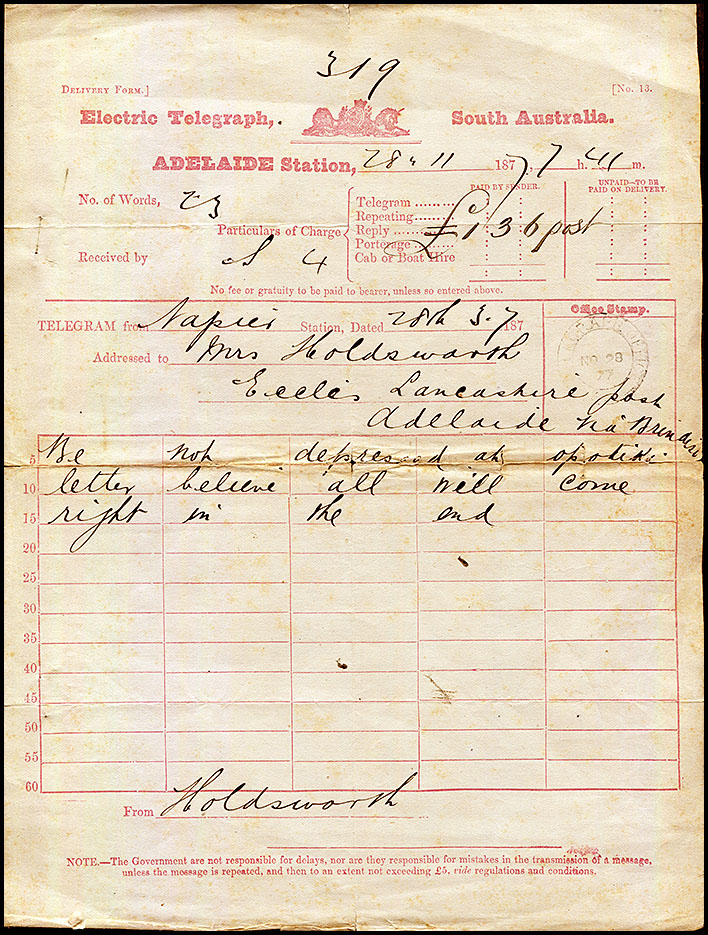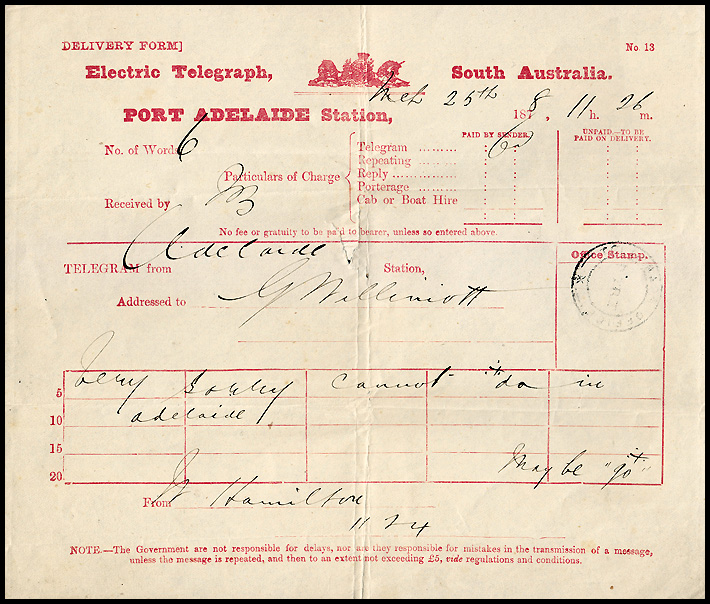Delivery form: SC-DO-5.
- Home, index, site details
- Australia 1901-1988
- New South Wales
- Queensland
- South Australia
- Tasmania
- Victoria
- Western Australia
- International
- Special aspects
| Heading and notes: | Form number No. 13. |
| Message area: | Five boxes in each line numbered at the left. |
| Reverse side: | Blank. |
| Colours (text & form): | Red on cream. |
| Size of form overall: | 288 × 213 mm or 194 × 223 mm. |
| Size of datestamp box: | 41 × 40 mm or 40 × 33 mm. |
- two sections above the message boxes;
- date to the right begins "187_";
- a box for the Office Stamp in the centre right (very early inclusion compared to other Colonies);
- reverse side is blank;
- no printing date;
- stations named are ADELAIDE and PORT ADELAIDE. No other stations known.
- main difference between the forms:
5A: has 60 boxes in 12 rows of 5.;
5B: has 20 boxes in 4 rows of 5.
 |
SC-DO-5A.
Napier (UK) to Adelaide via Brindisi. Early use of a handstamp on a telegram. Characteristics:
The route for the transmission of this form is unclear. From Napier it arrived in Adelaide - presumably to be sent over the Overland Telegraph line to England for delivery at Eccles in the County of LancashireEccles is of course famous for its Eccles cakes which were banned by Oliver Cromwell in 1650 in the belief that the cakes - and the wakes - had Pagan connections.. A post charge of £1 3s 6d is shown together with a manuscript note "POST ADELAIDE VIA BRINDISI". That delivery would have taken about two months - a long time for a message saying "Dont be depressed...". Using Adelaide may have been a quick connection to the steamer returning to Emgland. |
 |
SC-DO-5B.
Adelaide to Port Adelaide Note a possible correction to the written message has been added in the lower right corner (box 20). Characteristics:
|
Details of use and rarity.
| Form sub-number |
Schedule number | Earliest recorded date | Rarity rating |
| DO-5A | None. | 28 November 1877 at Telegraph Office, Adelaide. | RRRR |
| DO-5B | None. | 25 March 1878 at Port Adelaide. | RRRR |